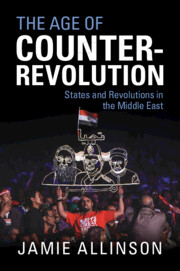This chapter focuses on Syria and Bahrain, states in which the ruling regimes of 2011 managed to retain power: albeit in the case of Syria at the cost of more than a decade of civil war. Acknowledging the great differences between the two states, the chapter highlights the similarity in the role of sectarianism and external intervention: binding the counter-revolutions from above, below and without. The chapter presents a materialist understanding of sectarianism, however, as the product of both particular forms of political economy and counter-revolutionary strategy. In Syria, this produced a cross-sectarian ruling elite, albeit with an Alawi core, that nonetheless had profoundly sectarian effects: whereas in Bahrain, sectarianism served more straightforwardly as a prop of the Khalifa ruling house. The Syrian counter-revolution could also rely, albeit to a lesser degree, on the inheritance of the previous revolution from above and the promotion of an ideology of development and modernisation. In both states, narratives of external intervention – Western, Zionist or Iranian – served to strengthen the counter-revolutionary cause, while extensive outside support for counter-revolution – mainly Russian and Iranian in Syria, Saudi and Emirati in Bahrain – made up for the limited appeal of the counter-revolution from below. This chapter focuses on Syria and Bahrain, states in which the ruling regimes of 2011 managed to retain power: albeit in the case of Syria at the cost of more than a decade of civil war. Acknowledging the great differences between the two states, the chapter highlights the similarity in the role of sectarianism and external intervention: binding the counter-revolutions from above, below and without. The chapter presents a materialist understanding of sectarianism, however, as the product of both particular forms of political economy and counter-revolutionary strategy. In Syria, this produced a cross-sectarian ruling elite, albeit with an Alawi core, that nonetheless had profoundly sectarian effects: whereas in Bahrain, sectarianism served more straightforwardly as a prop of the Khalifa ruling house. The Syrian counter-revolution could also rely, albeit to a lesser degree, on the inheritance of the previous revolution from above and the promotion of an ideology of development and modernisation. In both states, narratives of external intervention – Western, Zionist or Iranian – served to strengthen the counter-revolutionary cause, while extensive outside support for counter-revolution – mainly Russian and Iranian in Syria, Saudi and Emirati in Bahrain – made up for the limited appeal of the counter-revolution from below.
